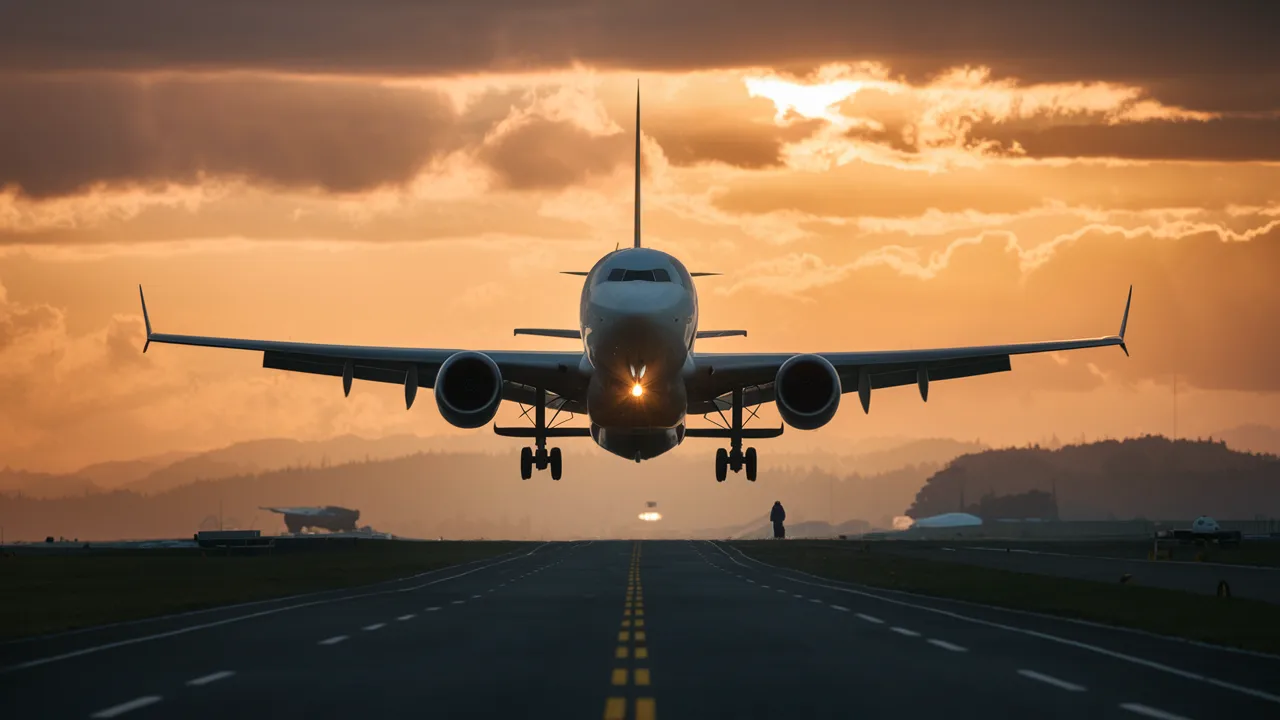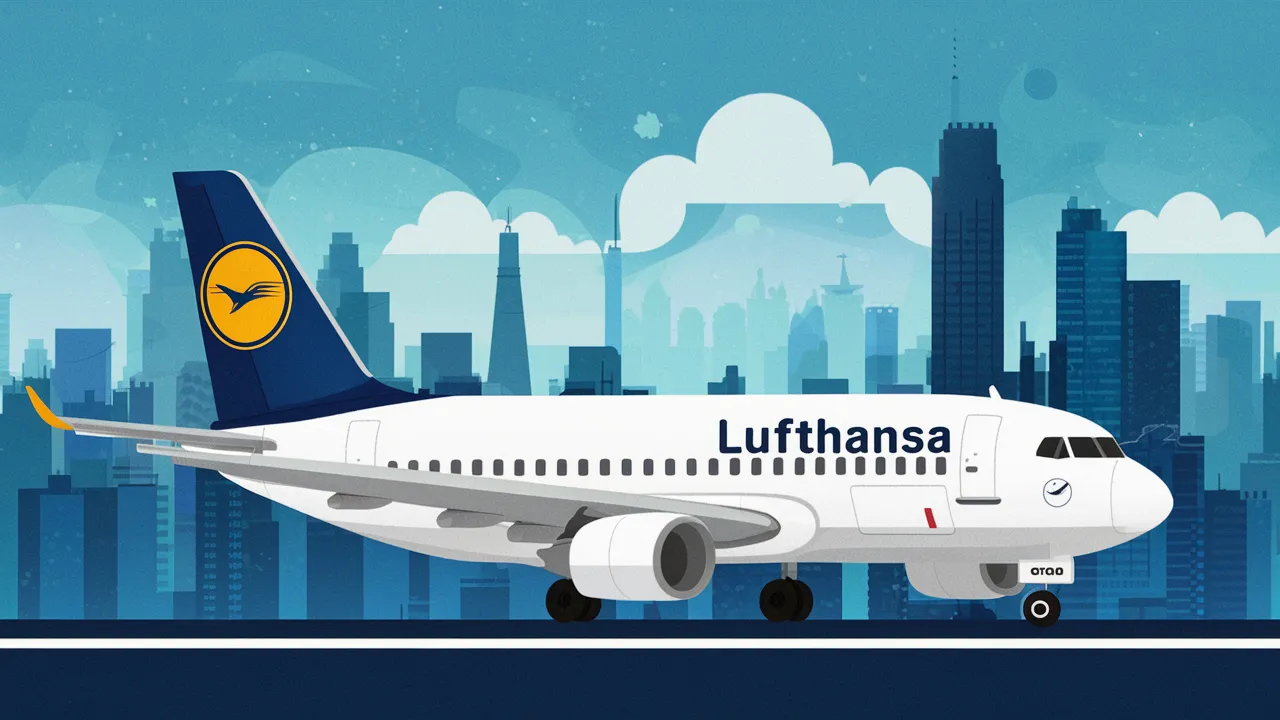Table of Contents
Have you tried to book a flight lately? If so, you’ve probably noticed that prices are much higher than before. In 2024, many people are asking, “Why are flights so expensive right now?” It’s not just you – airfares have gone up a lot, making it hard for both vacation and business travelers to afford trips.
Remember when you could fly across the country for the price of a nice dinner? Those days seem long gone. Now, some flights cost two or three times more than they did a few years ago. But these high prices aren’t random. They’re the result of many factors coming together to create a perfect storm for expensive air travel.
In this guide, we’ll break down why your ticket prices are so high. We’ll look at everything from big economic issues to the computer programs that set your fare. By the end, you’ll understand why your budget travel plans might need some adjusting.
How Inflation Affects Your Airfare
One of the biggest reasons for high flight costs is inflation. Inflation means that prices for most things – from food to gas – are going up. This means your money doesn’t buy as much as it used to. In the past few years, prices have risen faster than they have in a long time.
Airlines feel this too. Everything they need costs more: airplane parts, worker salaries, even the snacks they give you on the plane. Airlines don’t make huge profits, so when their costs go up, they have to charge more for tickets.
So, when you see a flight that used to cost $300 now priced at $400 or more, a big part of that is inflation. Airlines are just passing on their higher costs to you, the traveler.
Related: Can You Bring an Empty Metal Water Bottle on a Plane
The Problem with Fuel Prices

Another huge cost for airlines is jet fuel. When oil prices go up, so do airfares. It’s like how you pay more to fill up your car when gas prices rise.
Here’s an example: In early 2020, jet fuel cost about $1.50 per gallon. By mid-2022, it more than doubled to over $3 per gallon. Why? Things like the war between Russia and Ukraine affected oil prices worldwide.
To understand how much this matters, think about this: a long flight, like from Los Angeles to Sydney, uses about 30,000 gallons of fuel. When the price per gallon doubles, that’s $45,000 more in fuel costs for just one flight! Airlines have hundreds of flights every day, so these costs add up fast.
Airlines can’t just absorb these costs because they don’t make huge profits. So, when you see airfares jump suddenly, there’s a good chance fuel prices are a big reason why.
More People Want to Travel, But There Are Fewer Seats
In 2022, as more people got vaccinated against COVID-19, something interesting happened: “revenge travel.” After being stuck at home for months or years, everyone wanted to travel. People booked flights for delayed honeymoons, family visits, and long-awaited vacations.
Usually, airlines would love this. More passengers mean more money, right? But these weren’t normal times. During the worst of the pandemic, airlines had to cut costs. They got rid of older planes, laid off workers, and flew fewer routes. This made sense then, but it caused problems when travel picked up again. Suddenly, there weren’t enough planes or workers.
The result? More people wanted to fly, but there were fewer seats available. It’s like if a popular new toy comes out, but the stores don’t have many. The price goes up because everyone wants it. Airlines, needing to make up for pandemic losses, had no reason to keep prices low when they knew their few seats would sell out anyway.
This isn’t a quick fix. Training new pilots and adding new planes takes a long time. Until airlines catch up, expect this lack of seats to keep prices high.
What It Costs to Run an Airline
When you buy a plane ticket, you’re not just paying for your seat and a drink. You’re helping to cover the huge costs of running an airline. These airline operational costs are more than most people realize, and they have a big impact on ticket prices.
Let’s look at some of these less-obvious but important costs:
- Buying and Fixing Planes: Planes are super expensive. A new Boeing 787 Dreamliner costs $250-$300 million! Then there’s maintenance – fixing planes and replacing parts. These costs have gone up because parts are harder to get and more expensive.
- Paying Workers: From pilots to the people who load your bags, airlines employ a lot of people. Pilots get paid a lot because they need lots of training and have a big responsibility. With fewer pilots available, their salaries are going up.
- Airport Fees: Every time a plane lands, takes off or uses a gate, the airline pays fees. These can be high, especially at big airports. After the pandemic, some airports increased these fees to make up for their losses.
- Technology and Training: Airlines use fancy software for everything from booking your ticket to planning flight routes. This tech is expensive. Plus, staff need constant training on new tech and safety rules, which also costs money.
- Marketing and Customer Service: Airlines spend billions each year on ads, loyalty programs (like earning miles), and helping customers. These costs are less obvious than a plane, but they’re key to getting and keeping customers.
Now, remember how much airlines lost during the pandemic. Many had to borrow a lot of money just to stay in business. As travel comes back, they’re not just paying current costs; they’re also paying back these loans. The fastest way to do that? Charge more for tickets.
When airlines pass these operational expenses on to you, they’re not being greedy. They’re making sure they can keep running in an expensive and risky business. So next time you see a high fare, remember: a lot goes into it besides just flying you from one place to another.
Extra Charges: Taxes and Airline Fees
Have you ever found a flight that seemed cheap, only to see the price jump way up before you booked? Welcome to the world of government taxes and airline fees. These extras can add hundreds to your final bill.
Let’s break down some of these charges:
- Government Taxes: In the U.S., every ticket includes a 7.5% federal tax. There’s also a September 11th Security Fee ($5.60 per one-way trip) and segment fees ($4.50 per flight part). Flying to another country? Even more taxes. A trip from New York to London might have a U.S. tax ($18.90), a U.S. Customs fee ($5.99), and a U.K. tax (which can be over $100 for long flights).
- Airport Charges: Airports charge airlines for everything: landing, renting space, even those tunnels you walk through to the plane. These costs vary a lot. Landing at a small airport might cost a few hundred dollars, but at a big one like London’s Heathrow, it can be over $20,000 for a large plane.
- Airline Fees: Here’s where airlines get creative. They charge extra for things beyond your basic ticket:
- Baggage Fees: Once free, now the first checked bag can cost $30-$60. More bags or heavy ones? Even more.
- Seat Selection: Want to sit with family or get an aisle seat? That’s $10 to $100 extra.
- Priority Boarding: To get on the plane earlier (and get overhead bin space), airlines charge $10-$50.
- Wi-Fi and Movies: These aren’t free on many airlines anymore. They can add $10-$30 to your costs.
These fees are big money for airlines. In 2022, U.S. airlines made over $5 billion just from baggage fees! For airlines, it’s a way to offer a lower basic price but make more money from extras.
The takeaway? When planning a trip, always factor in these extras. That $199 flight could easily become $350 once all the taxes and fees are added. Flights aren’t necessarily more expensive – it’s just that more of the real cost is hidden in these small charges.
How Time of Year Affects Prices
Have you ever tried to book a summer vacation or a flight home for the holidays? You’ve probably noticed that it costs more. That’s because of seasonal travel pricing. When you fly is almost as important as where you fly in deciding your ticket price.
Travel isn’t the same all year. It goes up and down with seasons, holidays, and events. Airlines know this and change their ticket pricing to match. Here’s how it works throughout the year:
- Summer (June to August): School’s out, the weather’s great, and everyone wants to travel. A flight that’s $300 in May might jump to $500 or more in July. In 2024, with people still eager to travel after the pandemic, summer prices are even higher.
- Holidays (Thanksgiving, Christmas, New Year’s): These are the busiest times for airlines. Everyone’s flying to see family. A flight around Christmas, if you book late, can cost three times more than early December.
- Spring Break (March/April): Colleges and schools have breaks, so there’s a surge in both family trips and student travel. Flights to beaches and theme parks get pricier.
- Shoulder Seasons (May, September): Just before and after summer, prices drop. Kids are back in school, vacations are over. Airlines lower fares to get people to fly.
- Off-Peak (January, February): After the holidays, few people travel. Wallets are empty from Christmas. Airlines have their lowest fares now (except in early January when people return from holiday trips).
- Big Events: Things like the Super Bowl, Mardi Gras, or big festivals abroad can make flights to those places more expensive around those times.
Understanding these seasonal travel patterns can help you find deals. If you can be flexible:
- Book summer trips for early June or late August.
- Travel on the actual holiday (like Christmas Day) instead of the days before or after.
- Visit places in their off-seasons (Europe in late fall, Caribbean in late spring).
Airlines use smart computer programs to guess demand and make the most money during busy times. By knowing about these seasonal price changes, you can be smart too and find cheaper times to fly, even when travel is expensive overall.
How Airlines Set Prices: Smart Programs and Math
In the past, airlines would set a price for a flight and keep it the same. Now, the price you see comes from very smart dynamic pricing models that can change fares every hour, or even every minute. This isn’t random; it’s airlines using advanced tech to make the most money from every seat.
These models use algorithms – complex math and computer rules – that look at many things:
- Guessing Demand: Using past data, current bookings, and even things like local events or weather, airlines guess how many people will want a particular flight on a given day.
- Competitor Prices: Airlines can see their competitors’ prices in real-time. If Delta lowers prices on a New York to Los Angeles flight, United’s system might automatically adjust to stay competitive.
- Time to Flight: Generally, as the flight date gets closer, prices go up. The system thinks last-minute bookers (often business travelers) will pay more. But if a flight isn’t filling up, prices might drop to get people to book.
- Day and Time: Tuesdays and Wednesdays are often cheaper because fewer people fly midweek. Early morning or late-night flights (“red-eyes”) are often cheaper to fill less wanted times.
- Fare Classes: On one flight, there might be 10-20 different prices. These “buckets” get more expensive as cheaper ones fill up, making you want to book fast.
- Your Search History: If you keep searching for the same flight, cookies (small files on your computer) might tell the airline you want this flight, and they might raise the price.
- Route Profits: Some routes, especially with little competition, can charge more because you have fewer choices.
- Extra Buys: The system might offer a lower base fare if it thinks you’ll add extras like bags or seat selection.
These pricing algorithms work super fast, always changing based on new info. It’s very different from the old days of calling a travel agent for a set price. For us, this means prices can change annoyingly fast. A $200 flight in the morning could be $300 by afternoon and $250 by evening.
What can you do? Use tools like Google Flights or Skyscanner that show price trends. They won’t outsmart the algorithms, but they can help you spot patterns and find good times to book.
In short, these dynamic pricing models are both good and bad for travelers. They let airlines offer cheap fares when demand is low but also let them make more money when demand is high. Understanding how they work helps you navigate today’s tricky world of ticket pricing.
Beating the System: Finding Deals and Discounts
With high fares and smart pricing, can you still find cheap flights? Yes! While super-cheap cross-country trips might be rare now, there are still ways to get discount airfare without spending too much.
- Book Smart: Booking way early doesn’t always get the best deals. For U.S. flights, look 1-3 months ahead. For international, 2-8 months is best. But always check price trends – every route is different.
- Be Flexible: Sometimes, flying a day earlier or later can save hundreds. Use flexible date search on booking sites.
- Try Budget Airlines: They often have lower fares. But watch out for extra fees that can add up.
- Use Price Comparison Tools: Sites like Skyscanner or Google Flights can find deals across many airlines.
- Join Loyalty Programs: Even if you don’t fly often, miles can add up. Use them to offset high cash prices.
- Set Price Alerts: Let sites like Kayak or Hopper tell you when prices drop on routes you want.
- Consider Nearby Airports: Sometimes, a bit of extra driving can mean big savings.
- Book Round-trips: It’s often cheaper than two one-way tickets.
- Travel Off-peak: Fly midweek or in shoulder seasons for lower fares.
- Be Open to Destinations: Sometimes, where you fly matters less than the deal. Let deals guide your travel plans.
Remember, while airlines use smart systems to maximize profits, you can use smart strategies to minimize costs. It might take a bit more work, but finding those discount airfare deals can make your travel dreams possible, even when flights seem too expensive.
Final Words
In 2024, the question “Why are flights so expensive right now?” has many answers. We’ve looked at big issues like inflation and fuel costs, industry challenges like fewer seats and high operation costs, and tricky things like taxes and smart pricing systems.
But don’t let these high prices ground your travel plans. Understanding why fares are high is the first step. The next is using that knowledge to find ways around it. Whether it’s booking at the right time, using loyalty miles, or being flexible with your plans, there are still ways to find cheap flights.
While the days of unbelievably low fares might be behind us, affordable travel is still possible. It just takes a bit more savvy. By understanding the factors behind ticket pricing and using smart booking strategies, you can still take to the skies without breaking the bank. Safe travels and happy deal-hunting!




